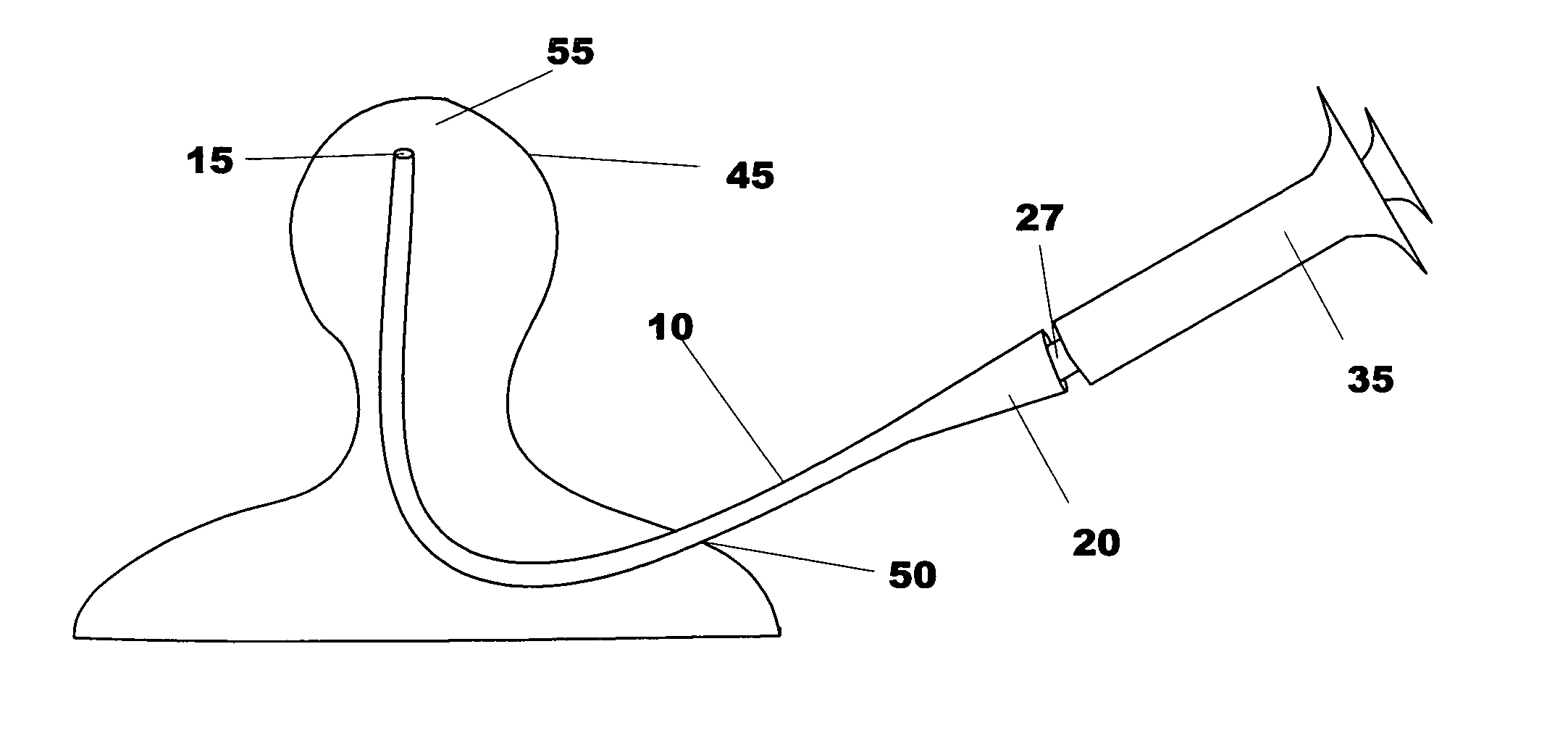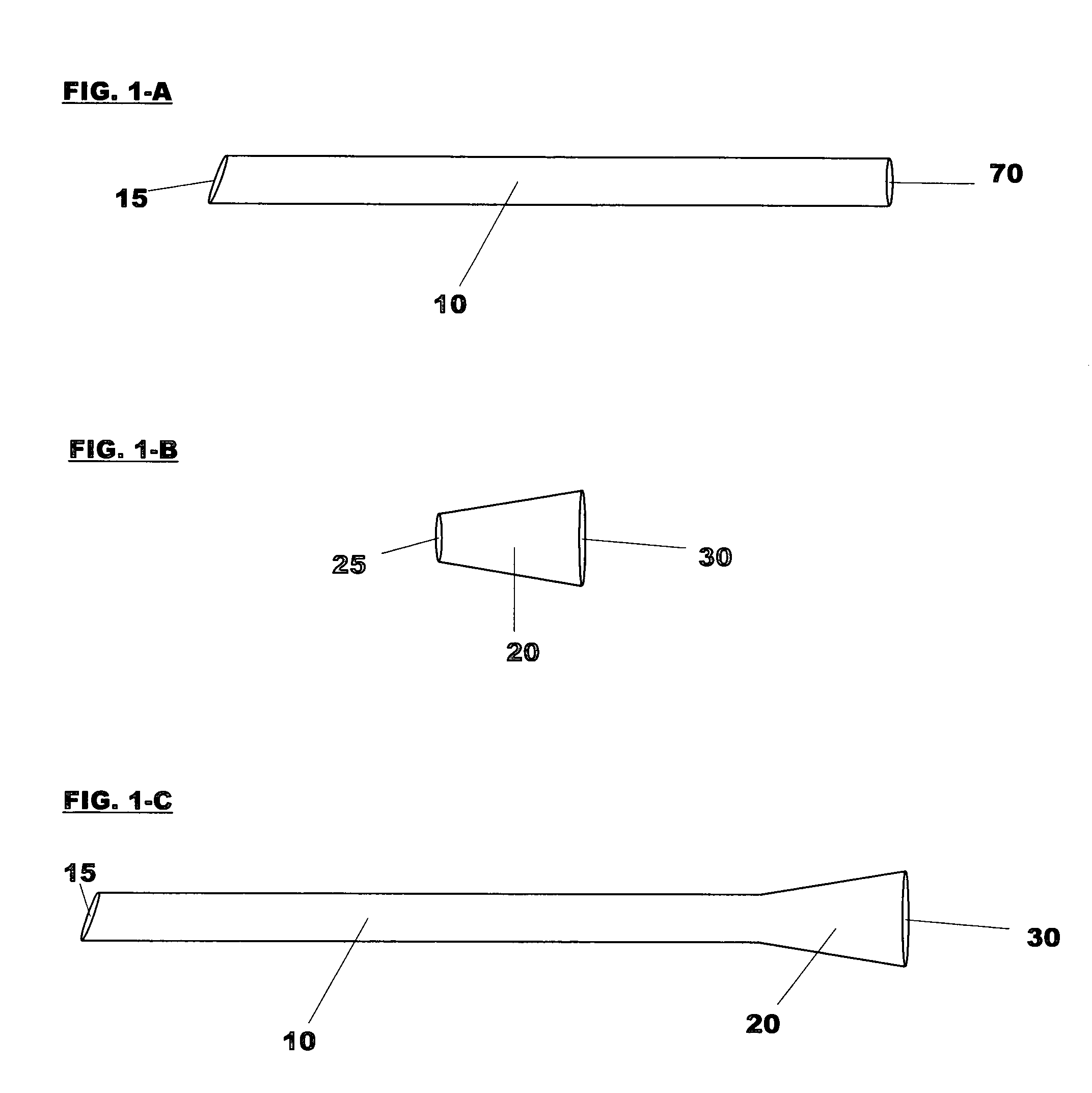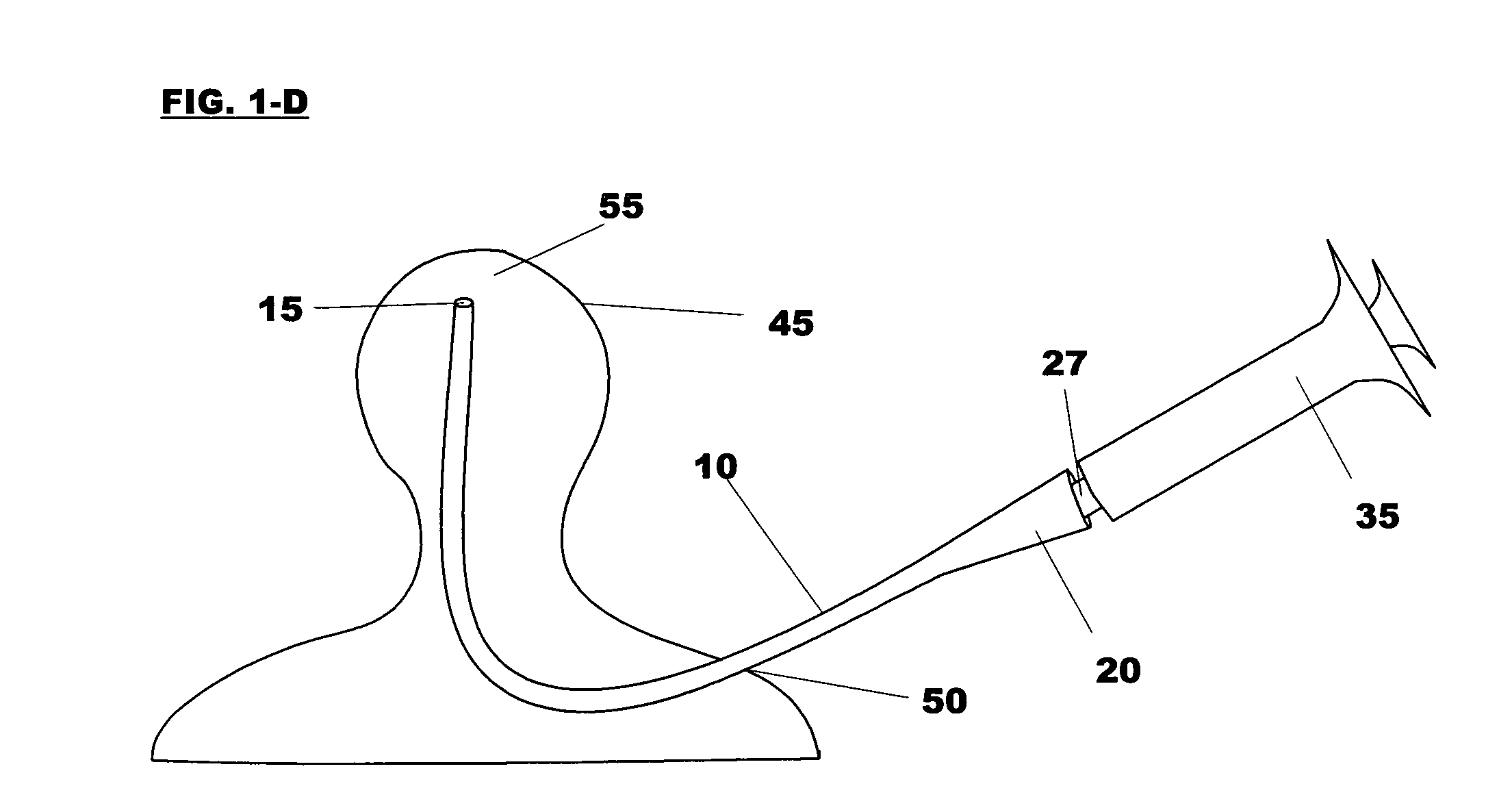Medicine dispensing device for bottle fed patients
a technology for dispensing devices and patients, which is applied in the direction of catheters, other medical devices, baby comforters, etc., can solve the problems of serious overdose or under-ingestion of medicine, medicine is not palatable, and medicine is not being ingested in the required dose,
- Summary
- Abstract
- Description
- Claims
- Application Information
AI Technical Summary
Benefits of technology
Problems solved by technology
Method used
Image
Examples
Embodiment Construction
[0046] FIGS. 1A-FIG. 1D show a preferred embodiment. FIG. 1A shows a dispensing tube 10. The dispensing tube 10 having a lumen. The dispensing tube 10 having an inlet end 70 and an outlet end 15. The outlet end 15 having an angle. The dispensing tube 10 can be flexible, yet unyielding to prevent collapse of the dispensing tube 10 during medicine dispensing. The angle of the outlet end 15 facilitates easy insertion of the dispensing tube 10 through a fissure in a wall of a bottle nipple. Materials such as Polypropylene, Polypropylene copolymer, non-DEHP PVC, Teflon, Silicon and other materials with similar properties can be used to manufacture the dispensing tube 10. The dispensing tube 10 can be manufactured using a variety of processes such as extrusion and molding.
[0047]FIG. 1B shows a conical syringe connector 20 having a generally conical shape. The conical syringe connector 20 having a lumen. The conical syringe connector 20 having an inlet end 30 and an outlet end 25. The inl...
PUM
 Login to View More
Login to View More Abstract
Description
Claims
Application Information
 Login to View More
Login to View More - R&D
- Intellectual Property
- Life Sciences
- Materials
- Tech Scout
- Unparalleled Data Quality
- Higher Quality Content
- 60% Fewer Hallucinations
Browse by: Latest US Patents, China's latest patents, Technical Efficacy Thesaurus, Application Domain, Technology Topic, Popular Technical Reports.
© 2025 PatSnap. All rights reserved.Legal|Privacy policy|Modern Slavery Act Transparency Statement|Sitemap|About US| Contact US: help@patsnap.com



